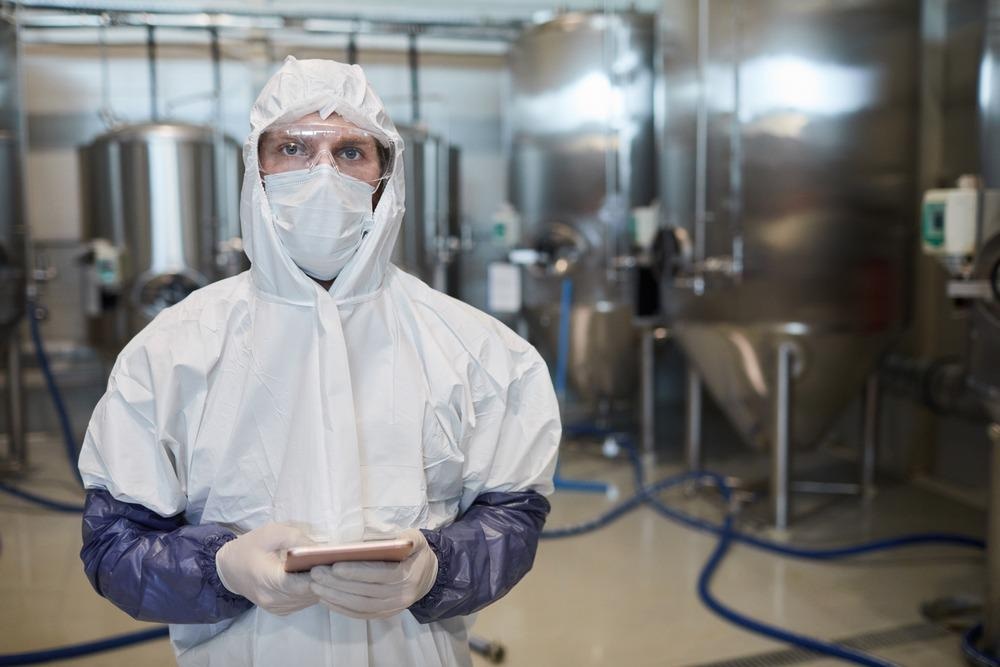This article explores the EU Chemical Strategy for Sustainability (CSS). What is it? What actions has it set in motion? What must the chemical industry do to become more sustainable?

Image Credit: SeventyFour/Shutterstock.com
A 2019 United Nations report predicted that global chemical production would double from 2.3 billion tons by 2030. While chemicals are essential components of important products, from healthcare to energy and even housing, most chemicals pose a threat to the environment and human health due to their hazardous properties.
Also in 2019, the European Commission published an article warning of the underestimated risk that exposure to man-made chemicals poses to our health. As part of the EU’s zero pollution goal, it published its Chemical Strategy for Sustainability (CSS) in 2020 to tackle the growing concern of chemical pollution.
What is the EU Chemical Strategy for Sustainability and What Does it Involve?
In December 2019, the EU launched its Green Deal, which set to improve the EU’s sustainability by “turning climate and environmental challenges into opportunities across all policy areas and making the transition just and inclusive for all.” Following this, in October 2020, the EU presented its CSS, which delivered a detailed strategy on how a toxic-free environment would be achieved.
The overarching goal of the CSS is to end the use of endocrine-disrupting and hazardous chemicals in the production of everyday items. To achieve this, the CSS outlined 56 actions that the EU must work towards. With the CSS, Virginijus Sinkevicius, EU Environment Commissioner, seeks to ‘make pollution a thing of the past’.
Claim your FREE Visitor Badge for ChemUK 2022
What Actions Will the CSS Involve?
The CSS will induce a total of 56 actions, with some of the key ones outlined as follows:
- the most harmful chemicals will be banned from use in consumer products;
- when assessing the risk of a chemical the ‘cocktail effect’ (potential harm when exposed in unison with other harmful products) will be taken into account;
- the use of per- and polyfluoroalkyl substances (PFAS) will be phased out in the EU unless their absolute necessity can be proven;
- investment and innovative capacity will be increased to allow for the production of safe and sustainable chemicals;
- the EU’s resilience of supply and sustainability of critical chemicals will be promoted;
- a “one substance one assessment” process will be established for risk and hazard assessment of chemicals;
- the EU will play a leading global role by championing and promoting high standards and eliminating the export of chemical substances that are banned for use in the EU.
As the CSS is part of the EU strategy, all countries within the EU will be expected to make changes towards achieving its goals. Some countries have already proclaimed the ban on the use of certain hazardous chemicals, e.g. Sweden and Denmark, in line with the actions of the CSS.
How the Chemical Sector Can Encourage a Circular Economy
Because chemicals are present in 95% of manufactured goods, the chemical sector has a huge influence on establishing a carbon-neutral, circular society. Innovations in the chemical industry contribute to advances in recycling protocols, allowing us to recycle much more waste. The chemical industry also encourages the circular economy by facilitating the reuse of metals sourced from recycled batteries to produce new battery materials for electric vehicles.
Further, it also supports the recycling of wind turbines and induces resource savings by allowing manufacturers to adopt an integrated production approach. To allow the chemical industry to reach its full potential in terms of promoting a circular economy, the actions of the CSS must be worked towards, so that waste, environmental damage, and harm to humans are eliminated.
Research Contributing to the Sustainability of the Chemical Sector
Various important research projects are currently underway in the chemical sector that are helping to enhance the sustainability of the sector. One recently published study, for example, showed that innovation in the sector stands to benefit from the widespread adoption of digitalization and digital tools that support the management of entire chemical life cycles.
The adoption of digitalization will allow the sector to establish processes that are safer and more sustainable. The study concluded that overall, embracing digitalization will be vital to the radical transformation needed to support the development of a more sustainable industry.
Additionally, much research is being conducted in the field of green chemistry, a sub-sector that has acted as a major driver of sustainable development in the chemical sector in recent years and will continue to drive key innovation that will help the EU meet CSS goals.

References and Further Reading
2019. The European Green Deal sets out how to make Europe the first climate-neutral continent by 2050, boosting the economy, improving people's health and quality of life, caring for nature, and leaving no one behind. [Online]. European Commission. Available at: https://ec.europa.eu/commission/presscorner/detail/en/ip_19_6691 Accessed March 2022
Chemicals strategy. [Online]. European Commission. Available at: https://ec.europa.eu/environment/strategy/chemicals-strategy_en Accessed March 2022
Anthony King. 2019. Chemical mixtures pose ‘underestimated’ risk to human health say scientists. [Online]. European Commission. Available at: https://ec.europa.eu/research-and-innovation/en/horizon-magazine/chemical-mixtures-pose-underestimated-risk-human-health-say-scientists Accessed March 2022
Fantke, P., Cinquemani, C., Yaseneva, P., De Mello, J., Schwabe, H., Ebeling, B. and Lapkin, A., 2021. Transition to sustainable chemistry through digitalization. Chem, 7(11), pp.2866-2882. https://www.sciencedirect.com/science/article/pii/S2451929421004745
Silvestri, C., Silvestri, L., Forcina, A., Di Bona, G. and Falcone, D., 2021. Green chemistry contribution towards more equitable global sustainability and greater circular economy: A systematic literature review. Journal of Cleaner Production, 294, p.126137. https://www.sciencedirect.com/science/article/abs/pii/S0959652621003577
Disclaimer: The views expressed here are those of the author expressed in their private capacity and do not necessarily represent the views of AZoM.com Limited T/A AZoNetwork the owner and operator of this website. This disclaimer forms part of the Terms and conditions of use of this website.